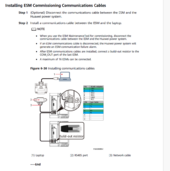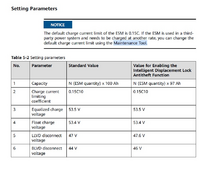xuhaibkhan
New Member
Well, I haven't had success accessing the parameters of the batteries in order to change/increase the charge current limits. Below I show the instructions from the battery manual on how to access the settings by connecting to the Enspire software when connecting my computer to the BMS. However, I show what the Enspire software looks like when I access it, and it doesn't look the same, but more importantly, there is no option to view/change the charge current, or any parameter, of the batteries. The installer is not familiar, so we are still trying to get the supplier to help. I tried to get help directly from Hauwei, that has been a dead end so far. If anyone on this forum is smart on Hauwei batteries, please help! I'll payThank you
View attachment 222990
View attachment 222991
Hi there , were you able to login/access this battery’s bms ! I have the same battery but not able to connect its bms with inverter.








